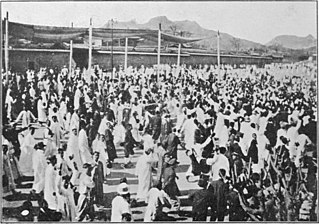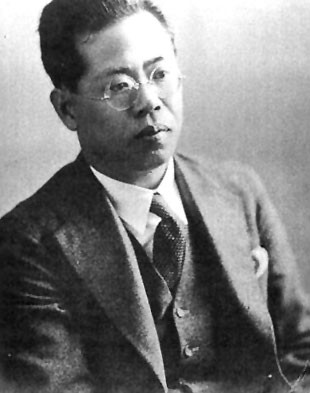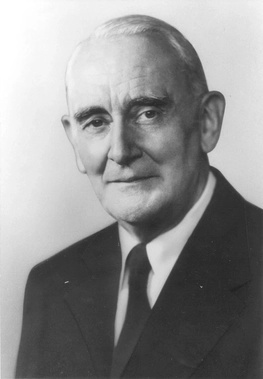
Syngman Rhee was a South Korean politician who served as the first president of South Korea from 1948 to 1960. Rhee is also known by his art name Unam. Rhee was also the first and last president of the Provisional Government of the Republic of Korea from 1919 to his impeachment in 1925 and from 1947 to 1948. As president of South Korea, Rhee's government was characterised by authoritarianism, limited economic development, and in the late 1950s growing political instability and public opposition.

The March First Movement was a series of protests against Japanese colonial rule that was held throughout Korea and internationally by the Korean diaspora beginning on March 1, 1919. Protests were largely concentrated in March and April, although related protests continued until 1921. In South Korea, the movement is remembered as a landmark event of not only the Korean independence movement, but of all of Korean history.

Woo Jang-chun, U Nagaharu in Japanese, was an agricultural scientist and botanist active in Korea under Japanese rule and later in South Korea, famous for his discoveries in the genetics and breeding of plants.

Battle Hymn is a 1957 American war film directed by Douglas Sirk and starring Rock Hudson as Lieutenant Colonel Dean E. Hess, a real-life United States Air Force fighter pilot in the Korean War who helped evacuate several hundred war orphans to safety. The cast also includes Anna Kashfi, Dan Duryea, Don DeFore, Philip Ahn, and Martha Hyer. The film was produced by Ross Hunter and filmed in CinemaScope.

Dean Elmer Hess was an American minister and United States Air Force Lieutenant Colonel who was involved in the so-called "Kiddy Car Airlift," the documented rescue of 950 orphans and 80 orphanage staff from the path of the Chinese advance during the Korean War on December 20, 1950. He is the subject of the autobiography Battle Hymn, published in 1956, which later served the basis for the 1957 film of the same name, where he was played by Rock Hudson.

Yanghwajin Foreign Missionary Cemetery, also known as the Hapjeong-dongInternational Cemetery, is a cemetery overlooking the Han River in the district of Mapo District, Seoul, South Korea.

Frank William Schofield was a British-born Canadian veterinarian, missionary, and Korean independence activist. He is also known by his Korean name Seok Ho-pil.

Homer Bezaleel Hulbert was an American missionary, journalist, linguist, and Korean independence activist.

Clarence Ridgley Greathouse was an American journalist, lawyer, and diplomat serving in Japan and Korea. In Korea he was most renowned for leading the investigation into the murder of that country's Queen Min in October 1895.

Hyochang Park (Korean: 효창공원) is a park in Yongsan District, Seoul, South Korea. The park is near Exit 1 of the Hyochang Park station of the Seoul Metropolitan Subway. Popular for leisure and exercise, the park has walking paths, sports facilities, forests, and cherry blossom trees. In 1989, the park was designated a Historic Site of South Korea, and contains the Kim Koo Museum.
Mary Linley Taylor (1889–1982) born Hilda Mouat Biggs, was an English stage actress, who spent most of her adult life in Korea.
Yun Im was a politician, general, and soldier of the Korean Joseon Dynasty. He was from the aristocratic family of the Papyeong Yun clan, and related to the Royal Jeonju Yi clan through his mother. He was the older brother of Queen Janggyeong, the second wife of King Jungjong of Joseon, and the uncle of King Injong of Joseon. He was also the nephew of Park Won-jong, and was titled as Prince Paeun.(파은군; 波恩君) He was also known as part of DaeYun versus SoYun close relatives of the DaeYun (allied closely by marriage to Queen Munjeong.

Russell L. Blaisdell was an American minister and United States Air Force Chaplain colonel who organised the so-called "Kiddy Car Airlift," the rescue of 964 orphans and 80 orphanage staff from Seoul in the face of the Chinese advance during the Korean War on December 20, 1950.

Tatsuji Fuse was a Japanese lawyer and social activist.
Buyeo Sa was a prince of Baekje, one of the Three Kingdoms of Korea. He was the son of Buyeo Pung by a Japanese woman and also grandson of the last king of Baekje, Uija of Baekje. He is also called Sa-wang (絲王). In Japan he was known as Teika-Ō (禎嘉王), also as Kudara no Ookimi and Kudara no Miko (百済王).

The murder of Ko Joon-hee refers to the murder of a five-year-old girl in Jeonju-si, South Korea. Ko Joon-hee was killed in November 2017 in Eau-dong, Jeonju-si, South Korea. Initially, the police were notified that a five-year-old child had gone missing. However, after a thorough investigation, Ko Joon-hee was found to have been murdered due to physical abuse by her biological father. The father, Ko Byung-sik, his common-law-wife, and his mother-in-law had conspired to murder and abandon the child. Due to the brutality of the case, a wave of shock resonated throughout the country of South Korea.
Yi Gu, formally known as Grand Prince Imyeong (Korean: 임영대군), was an imperial prince of the Joseon dynasty. He was the fourth son of King Sejong. His brothers were King Munjong of Joseon and King Sejo of Joseon.

Kim Ga-jin was an Imperial Korean politician, diplomat and an independence activist during Korea under Japanese rule.

Park Jae-ok was the first child of South Korean president Park Chung Hee and his first wife, Kim Ho-nam.
Koo Kwang-mo is a South Korean businessman. The chairman of LG, he is among the richest people in South Korea. As of December 2024, Forbes estimated his net wealth to be US$1.5 billion and ranked him 19th richest in South Korea.
















